Okanogan Elementary Students Explore West African Rhythms
Winter 2016-2017
by Ashley Lodato, Arts Education Director for Methow Arts
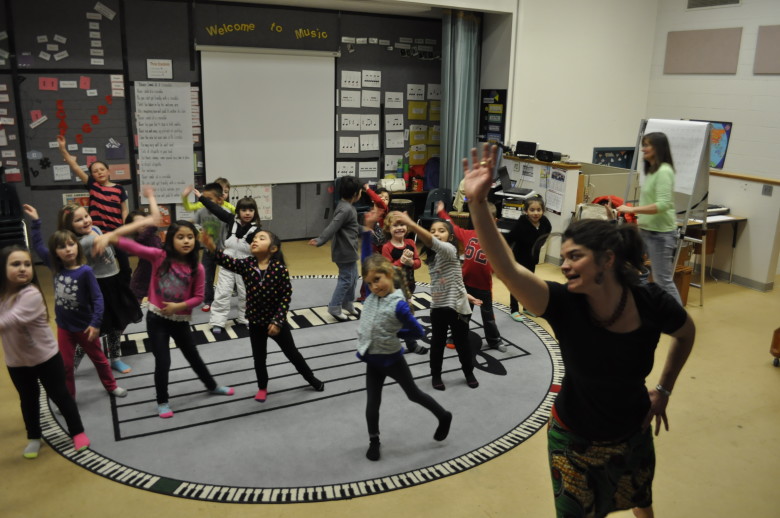 For three snowy weeks in February, the music room at Virginia Grainger Elementary School was alive with unusual sounds: the patter of small feet and the thump of hands on the djembe–the skin covered goblet drum of West Africa. As Methow Arts teaching artists Brooke Bourn and Crystal Elliott guided the students through the rhythms and movements associated with West African dancing and drumming, giggles and shouts of joy filled the air.
For three snowy weeks in February, the music room at Virginia Grainger Elementary School was alive with unusual sounds: the patter of small feet and the thump of hands on the djembe–the skin covered goblet drum of West Africa. As Methow Arts teaching artists Brooke Bourn and Crystal Elliott guided the students through the rhythms and movements associated with West African dancing and drumming, giggles and shouts of joy filled the air.
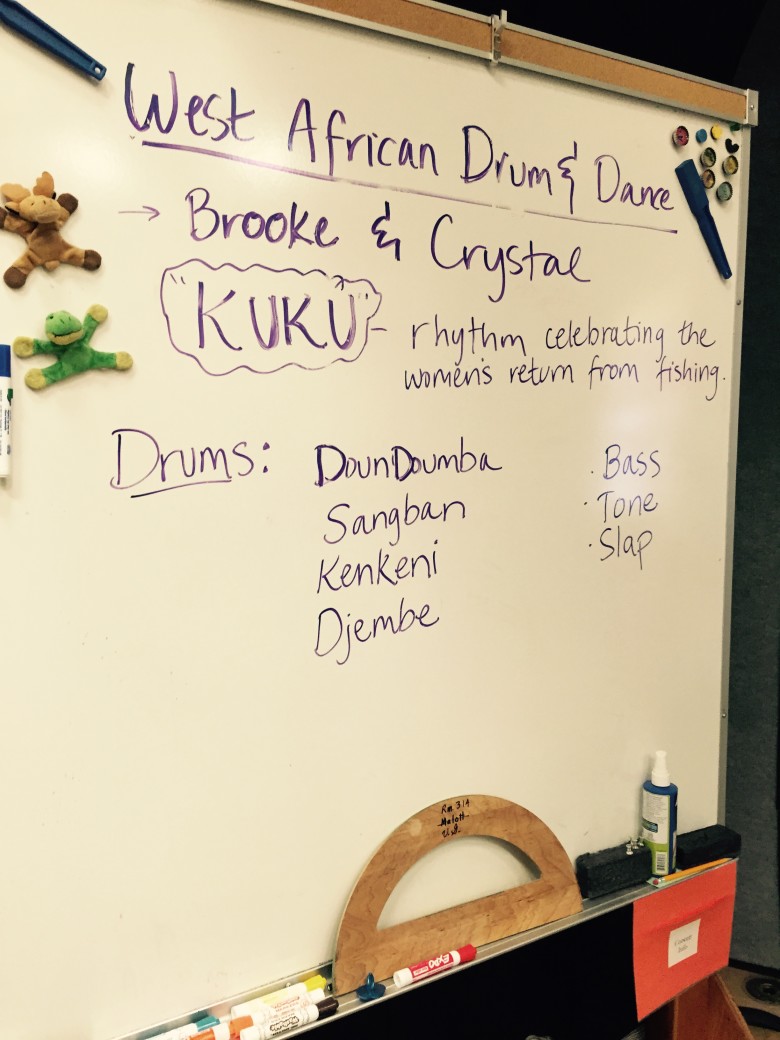 The West African Rhythms residency is part of the Music and Movement project, which enhances the existing music program at Virginia Grainger Elementary by incorporating expressive movement through dance and drumming, as well as introducing students to the music, instruments, and traditional dance forms of West Africa. In addition to movement, students gained an understanding of the cultures of West Africa culture. The residency was sponsored by a Stronger Schools grant through the Community Foundation of North Central Washington, ArtsWA, NEA and the Icicle Fund.
The West African Rhythms residency is part of the Music and Movement project, which enhances the existing music program at Virginia Grainger Elementary by incorporating expressive movement through dance and drumming, as well as introducing students to the music, instruments, and traditional dance forms of West Africa. In addition to movement, students gained an understanding of the cultures of West Africa culture. The residency was sponsored by a Stronger Schools grant through the Community Foundation of North Central Washington, ArtsWA, NEA and the Icicle Fund.
AFRICAN RHYTHM AND DRUMMING
Rhythm is the driving force behind African dance and many styles can be identified by their characteristic rhythmic beats. Dancers respond to percussive patterns created by drummers, who in turn respond to the dancers. It is a dialogue assisted by spectators who participate in the performance by clapping or stamping their feet. Dancers are judged by how well they are able to follow the rhythm.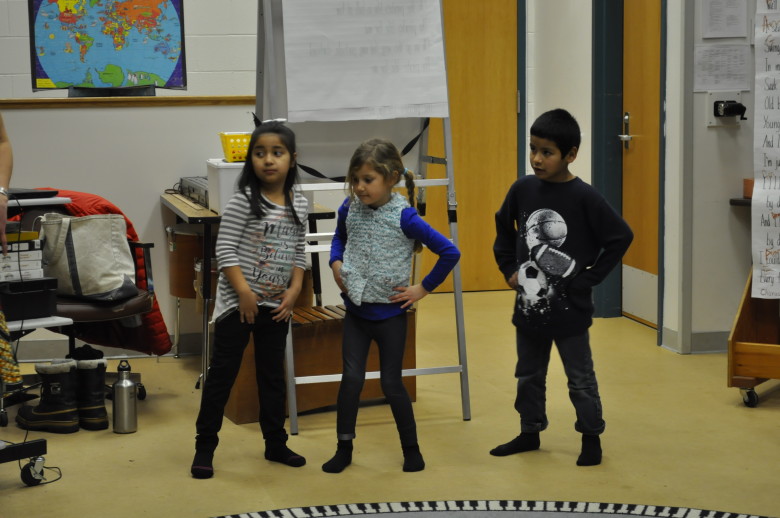
African dance is polyrhythmic, meaning that different rhythms are expressed using various parts of the body. The chest, pelvis, arms, and legs may all have their own rhythm, but be moving at the same time. The complexity and challenge of African dance stems from this use of the whole body.
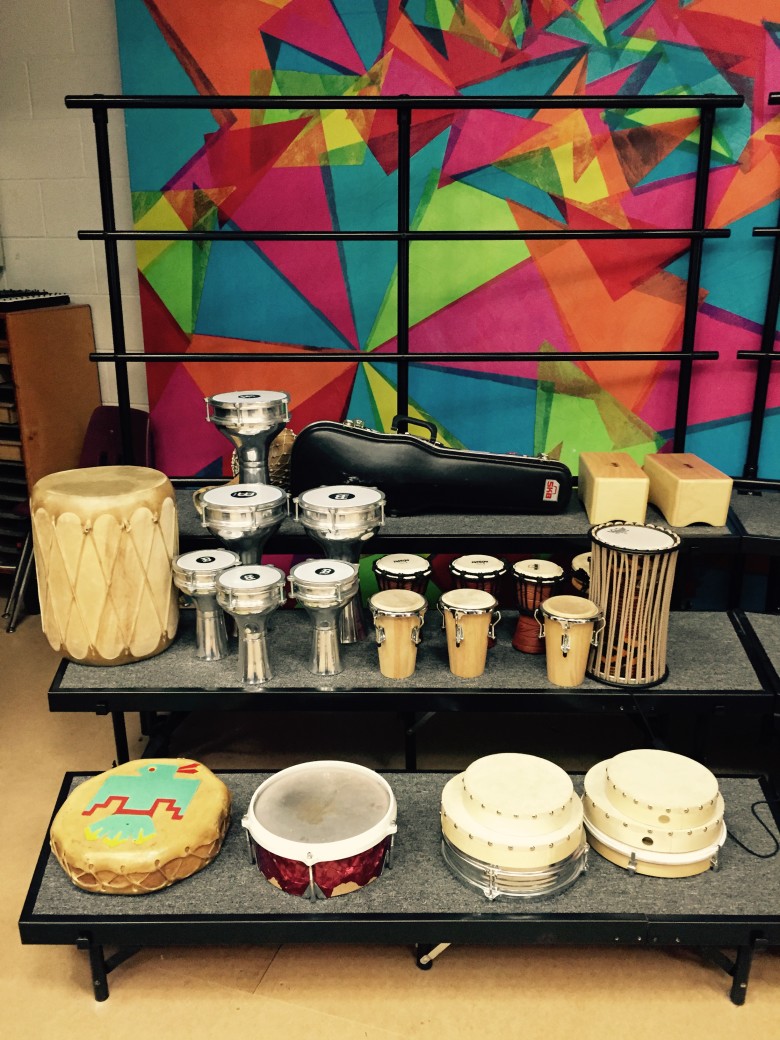 AFRICAN RHYTHMS COMPLEMENT EXISTING CURRICULUM
AFRICAN RHYTHMS COMPLEMENT EXISTING CURRICULUM
Okanogan music teacher Marilou Baker says “This complements and enhances the existing curriculum. Currently, students learn and practice rhythms at increasingly more complex levels in every grade level K-5. K-1 students typically play egg shakers, rhythm sticks, and sometimes buckets. 2nd graders use shakers, sticks, and a variety of smaller drums. 3rd grade learns drums and xylophones. 4th graders play recorders and drums. 5th graders learn drums and ukuleles. As rhythm is a key element of and the foundation to all music, it is taught at all grade levels.”
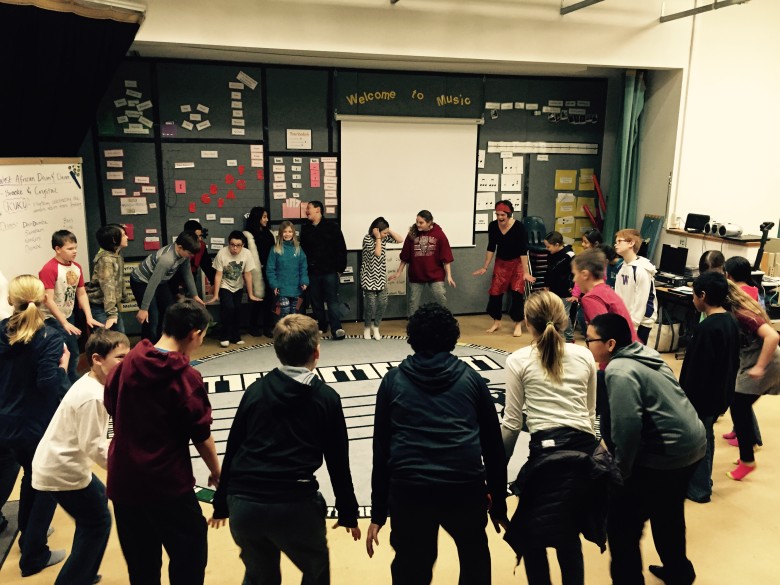 Baker goes on to talk about the goals of the project. “Students learned about elements such as space, rhythm, levels, speed, size, quality, balance, and to actively explore these concepts. They learned the basic vocabulary of West African dance and how to sync up the dance in their bodies with the rhythm of the drums. Incorporating more rhythm and dance across the grade levels helped all students gain a greater understanding of key musical elements of beat, rhythm, and timbre. Students developed skills in active listening, movement and performing on instruments. They had the opportunity to gain a greater understanding of music from a variety of cultures – from their own community to cultures from around the world. They began to understand music from a more historical perspective and to see how it has changed over time. The curriculum met many music standards and served to enrich the learning and experiences of all students, as they were actively engaged in the experiences of drumming and dancing.”
Baker goes on to talk about the goals of the project. “Students learned about elements such as space, rhythm, levels, speed, size, quality, balance, and to actively explore these concepts. They learned the basic vocabulary of West African dance and how to sync up the dance in their bodies with the rhythm of the drums. Incorporating more rhythm and dance across the grade levels helped all students gain a greater understanding of key musical elements of beat, rhythm, and timbre. Students developed skills in active listening, movement and performing on instruments. They had the opportunity to gain a greater understanding of music from a variety of cultures – from their own community to cultures from around the world. They began to understand music from a more historical perspective and to see how it has changed over time. The curriculum met many music standards and served to enrich the learning and experiences of all students, as they were actively engaged in the experiences of drumming and dancing.”
Baker notes that the West African unit addresses many of the Elements (such as beat, rhythm, expression), Fundamentals (such as improvisation, genre, culture), and Skills/Techniques (such as active listening, singing, and playing instruments) required by state standards. State standards require that in grades K-4, students create, perform, and respond to music in a variety of ways–individually and with others–that build over the grades. In kindergarten this begins with singing and creative movement. In grades K-3, students have the opportunity to sing, move, play, and improvise with a variety of pitched and non-pitched instruments. This progresses through to 4th grade, where students engage in ensembles.
Says Baker, “I carry out my job as a music teacher most effectively when my students are engaged, when they see music as relevant to their lives, and when there is a social and/or cultural context for music. The West African unit provides the opportunity for music learning to be engaging and relevant.”
CLICK HERE to watch the students working on the elephant dance.
Methow Arts Alliance’s Artist-in-Residence program serves 5200 students in the Brewster, Bridgeport, Methow Valley, Okanogan, Omak, and Pateros School Districts as well as the Paschal Sherman Indian School on the Colville Reservation. Most residencies in Okanogan are supported by Okanogan Kiwanis, Okanogan-Omak Rotary, Greg & Mary Hamilton, the Community Foundation of North Central Washington, and ArtsWA, NEA and the Icicle Fund.. This year’s African Rhythms program was sponsored by a Stronger Schools grant through the Community Foundation of North Central Washington. THANK YOU!
Contact: Methow Arts Alliance, ArtsEducation@MethowArtsAlliance.org or 509.997.4004